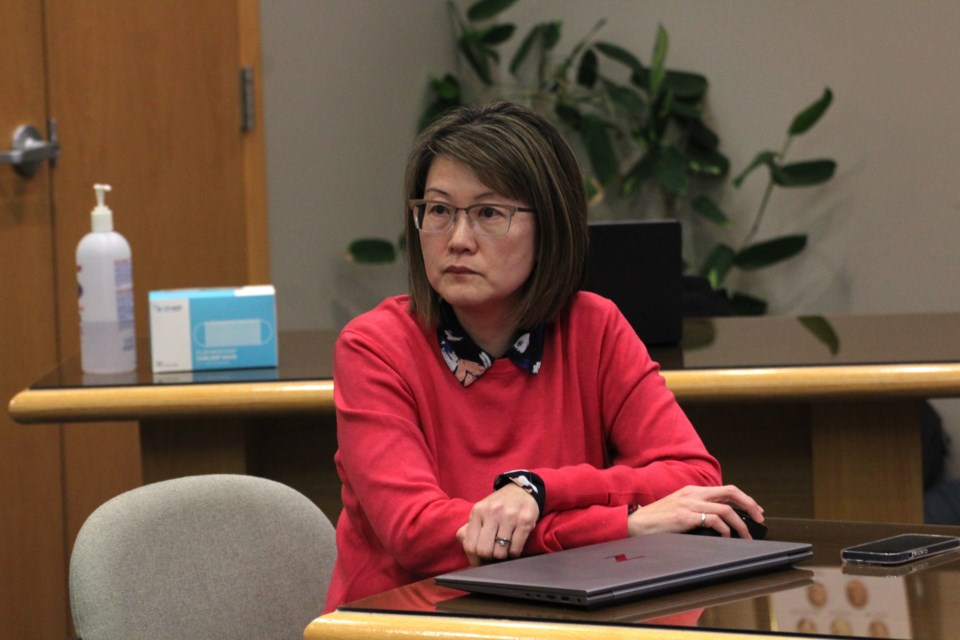ATHABASCA – After a year that saw the Town of Athabasca deal with a once-in-a-decade fire and a once-in-a-century flood, a report on potential risks from climate change gave councillors a better idea of what to watch out for in the future.
In the middle of an unseasonably warm winter, councillors voted 6-0 during their Dec. 19 meeting in favour of a motion to adopt the climate change risk and vulnerability assessment adaption planning report after a presentation from consulting firm Associated Engineering (AE), with help from the All One Sky Foundation, outlined some challenges the town may face moving forwards.
“First and foremost, it’s important to identify what the risks are, and then find out what types of mitigation policy-wise we can put in place,” said Athabasca mayor Rob Balay during a Jan. 4 follow up. “It’s important to have a plan where we find ways to fund those mitigations; that has an economic impact as well.”
The highlight of the report, according to the team that prepared it, was a high-level risk assessment for the town. AE identified the five highest risks to town owned and operated assets: wildfire smoke, high winds, river flooding, a hailstorm, and days above 30 degrees Celsius. Potential hazards were ranked on the likelihood of occurrence, as well as the level of consequence.
“If there’s a flood that is highly unlikely to happen, but it would have a major consequence, with climate change that flood could be pushed into a higher risk,” said Juliana Tang, a technical specialist and geo-environmental engineer with AE. “What we do is understand what that risk is and reduce the risk from adaptation.”
“If we would have surveyed the community prior to doing this assessment, I think they would have identified wildfire as the biggest risk, and not necessarily recognizing that smoke is a big part of that,” said Balay. “The fire doesn’t have to be close to you to still impact you, and I think that was a real realization that was brought forward, not just in the report but in the past year we experienced.”
Tang said extreme weather impacts were a major point of focus for the assessment — a previous project she had worked on in the greater Edmonton area estimated that a lack of action could cost the region billions.
“It’s something we really need to pay attention to in terms of disaster causes, and putting a dollar sign to it,” said Tang. “It’s something we can’t ignore because there’s such a high dollar value attached to it. These costs are across Canada.”
For the greater community, a prolonged drought topped the list of concerns. A potential water supply shortage would negatively impact water-reliant businesses, including Al-Pac, and local agriculture.
“It seems like a long way down the road, but water supply is important. Right now the Athabasca River doesn’t seem like it would ever be a major concern, but looking at what we’ve gone through in the last decade or so down south, look at how its impacted the south,” said Balay. “That same impact can eventually happen to us here in the north. It makes you think about things like that.”
According to the report, the town’s solid waste infrastructure, such as landfills and sewer lines, was most at risk, with higher temperature and less precipitation increasing the risk of fires.
AE also provided the town with four recommendations for its next steps: prioritize actions, share the information with relevant departments, continue to monitor, assess, and update the risks cores, and continually review the climate data. Looking ahead into 2024 and beyond, Balay stressed the importance of having good plans, and good relationships with municipal and business partners.
“It’s hard to predict what’s going to happen in the future, even though you know it’s going to be a dry year,” said Balay. “You can’t go out and start plowing fireguards everywhere, but you can make sure your joint-use agreements to support each other are up to date, you can make sure your resource lists are up to date, so that if and when it’s called into action, you know that you can enact it when you need it.”



